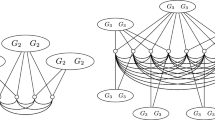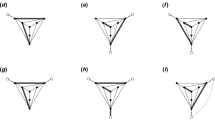Abstract
Let $G=(V,E)$ be a simple graph and $s$ and $t$ be two distinct vertices of $G$. A path in $G$ is called \lb for some $\length\in\N$ if it does not contain more than $\length$ edges. We prove that computing the maximum number of \vd \lb $s,t$-paths is \apx--complete for any $\length\geq 5$. This implies that the problem of finding $k$ \vd \lb $s,t$-paths with minimal total weight for a given number $k\in\N$, $1\leq k \leq |V|-1$, and nonnegative weights on the edges of $G$ is \npo--complete for any length bound $\length\geq 5$. Furthermore, we show that these results are tight in the sense that for $\length\leq 4$ both problems are polynomially solvable, assuming that the weights satisfy a generalized triangle inequality in the weighted problem. Similar results are obtained for the analogous problems with path lengths equal to \length instead of at most \length and with edge-disjointness instead of vertex-disjointness.
Similar content being viewed by others
Author information
Authors and Affiliations
Corresponding author
Rights and permissions
About this article
Cite this article
Bley, A. On the complexity of vertex-disjoint length-restricted path problems. comput. complex. 12, 131–149 (2003). https://doi.org/10.1007/s00037-003-0179-6
Received:
Issue Date:
DOI: https://doi.org/10.1007/s00037-003-0179-6




